Remember the ban on smoking in public places that came into force in England back in 2007?
Successful pubs soon realised that once people couldn’t puff on the premises, investing in decent food was the best way to attract new drinkers inside.
There are some striking similarities with this situation and what’s going on in the c-store sector right now. New laws on the horizon that make selling tobacco trickier have meant that some stores are instead looking towards fresh food to keep sales strong - and that often means expanding the space available in the chiller.
Avtar Sidhu’s experience is a case in point. After buying and turning around a Kenilworth c-store he’s now set to re-open Roseland Stores as a Simply Fresh this July. For Avtar, the emphasis on ‘fresh’ is underlined by investment in chilled sandwiches and snacks.
On a mission
”When you look at the bigger picture, consumers are now used to going to the fridge when they need inspiration. There’s a Kantar stat which says we look in the fridge 42 times a week - so we spend a lot of time with the door open deciding what to eat! The mission side of chilled snacks is suited to c-stores; these are not shopping list products. You know you’ll have cereal seven times a week, but you could end up seeking the hot, quick and tasty category late on a Thursday night.”
John Armstrong, marketing director, Kepak
“Fresh is really going to be the driving force for us,” he says. “We’re an affluent area so we’re pushing the healthy eating message. And for us that means fresh and chilled rather than frozen. For instance, we’re not doing any frozen ready meals. It’ll all be chilled.”
Avtar says he’s spent about half a million pounds demolishing the original space and then remodelling the store. Central to the concept will be new super-sized chillers.
“I’m having 15sq m of chilled refrigeration with the all fridges at double height,” he says. “The extra height gives you the flexibility to cross-merchandise as you can put almost anything in there. It also doesn’t cost much more to have the bigger units.”
Cross-merchandising will be at the heart of the store’s chilled food offer. Says Avtar: “We live in a society where people haven’t got much time. So, as a convenience store retailer, your role is to enable customers to come in quickly, get what they want and go in a stress-free environment,” he says. “Cross-merchandising in the chiller is definitely a part of that. By offering a sandwich along with a drink and a snack - signposted by proper POS - you’re encouraging them to buy two more components. It’s making it so easy you’re taking away the choice for them in a way!”
Along with an olive bar built into the counter, the store will sell fresh sandwiches, wraps and baguettes, plus pasta and salad pots.
Budgens and Londis tap into market changes
When Budgens and Londis looked to update their chilled sandwich offer earlier this year they knew they needed to tap into an increasingly sophisticated sandwich market.
Andrew Kendall, trading director at Budgens and Londis, says: “The launch of Good to Go saw improvements to the range, including a supplier change and a rationalisation down to 14 SKUs of the best-selling fillings in the market.
“An improvement in quality was also a key focus to meet shopper expectations, which is why many of the key ingredients are British, including all cheese, chicken and ham.”
Now the recession is starting to release its grip on the UK, fewer people may be choosing to make their sandwiches at home, helping the out-of-home sandwich market. Yet this doesn’t mean shoppers have jettisoned the need for value-for-money. “Trends suggest increasing demand for lower price points - with shoppers having identified this as an area to save money,” says Kendall. “The launch of Good to Go saw rrps lowered to help accommodate this. Yet value is as much about the quality as it is about price.”
The presence of sandwiches in the chiller should be a smart one, since HIM senior research manager Blake Gladman says that the traditional sarnie is still a big draw for customers. “When we look at the food-to-go mission, the main food or drink product driver to stores for shoppers on this mission is soft drinks, but second is sandwiches,” he says.
“And with shoppers looking into a lunch-time solution, the sandwich (or sandwich alternative) and its relative value and quality are key triggers in driving the choice of store.”
He adds: “Food to go represents 14.7% of total convenience trade spend as a mission. This and meal occasions are the two missions that have seen trade spend growth in this year (at 4%), compared with both top-up and treat, which have seen a trade spend decline.”
HIM research reveals that nearly half (45%) of food-to-go shoppers rate ‘filling’ as an important factor in their sandwich choice.
According to Country Choice senior marketing manager Rebecca Whitmore, there’s no need for most c-stores to ape Prêt à Manger and load up on upmarket crayfish and pesto-style selections. “There’s lots of interesting stuff around new flavours such as sweet chilli chicken,” she says. “But the top three fillings are still chicken, followed by cheese and then ham. These never seem to change!”
“For retailers this means you don’t have to be worried about a big range. As long as you have the chicken, a vegetarian option - and maybe some fish - you’ll have it covered. Plus, if you want variety you can change the carrier - say from a baguette to a wrap - and add it that way.”
As well as filling, Gladman states that provenance is important as consumers start asking searching questions about where their food was sourced.
Keep it clean
Installing a decent chiller can be a big step forward for c-stores looking to bolster their sandwich and snack offer. But once it’s on the shop floor the real work starts in keeping it filled and making sure it’s clean.
“Chilled really sets the benchmark for a store,” explains Kerry Foods customer marketing controller Richard Tyler.
“If it’s nicely laid out with fresh produce then it builds a halo effect which covers the whole space. If it’s messy it scares shoppers and destroys any trust you’ve built up.”
Adds John Armstrong, marketing director at Kepak: “There are two lessons that come through with chilled. First, have great POS so people know what you’re offering from 100 yards away. The category is great at creating footfall.
“And keeping it clean is the golden rule. When you’re dealing with food no one’s going to buy anything that looks a bit scummy.”
This means taking time every day to rotate stock, check temperatures and ensure no packages have split or look dirty to put your shoppers off.
“It’s very simple, but you do have to invest the time in it,” says Tyler.
“It’s important to have a routine in place and ensure that all staff are aware of it.”
Luckily, at McKinnon’s Spar in Ilminster, Somerset, when customers ask about sourcing, the staff can often reply “they’re made just up the road”.
Laurie McKinnon says that one of the store’s most popular chilled lines is from Bonner’s, a local butcher and deli that supplies a full range of pasties, snack rolls and sandwiches.
“People really love the local angle,” he says. “They like the fact it’s from a butcher that’s been in the town centre for years. Everything is sold the day it’s made and if we need more then they can get it for us straight away.”
Laurie says that they do “a lot of volume” in chilled - usually about 150 sandwiches a day across the board from brands including Spar and Urban Eat.
“We do a lot of chilled meat snacks as well,” he continues. “Our wholesalers have them on rotation so there’s always a pricemarked pack or a 60p deal. We sell a lot of items such as Fridge Raiders - especially if they’re on promotion.”
Elsewhere, manufacturers are attempting to find new ways to bridge the gap between the chiller and hot foods. For instance, Kepak has pioneered the new Hot Quick and Tasty (HQT) category - which it believes will grow to be worth a billion pounds in the next decade.
“The category covers micro-snacking, pastries, soups and quick-serve ready meals which can be taken from the chiller, heated up right there in the store, or taken home for later,” says Kepak marketing director John Armstrong.
“The heat-to-serve category over-indexes by 50% in convenience compared with grocery,” he says.
He advises retailers who want to offer hot food to start off by buying a branded microwave - “that way they can offer hot food to go without the expense of a hot counter”.
With plenty of ways into chilled sandwiches and snacks, the choice can be bewildering for stores caught between choices like whether to order in sarnies off-site or train staff to make them in-store. However, as Blakeman advises, the key to making chilled work is to keep it simple.
“Remember that shoppers spend on average five minutes in store,” he says. “They want quick and easy solutions so that they can make a quick (but informed) decision and then grab and go.”
In Brief
Kepak in summer advert push
Kepak is investing £1.5m in a new national campaign promoting meaty micro-snacking brand Rustlers this summer. The promotional push features cheeky TV commercials asking consumers to ‘Satisfy their Hunger Monkey’ with a burger rather than biscuits.
Double Dippers to satisfy hunger
Kerry Foods’ Mattesons Double Dippers offer hungry shoppers a new take on chicken. Featuring marinated chicken pieces packaged with two dips, it’s a naturally high-protein product (an element that’s very on-trend at the moment) with less than 190 calories per pack.
Get into olives
Olives are becoming a popular healthy choice and Crespo’s 70g re-sealable snacking pouches in variants such as Pitted Green Olives with Chilli Pepper offer a way in for retailers who don’t want to set up their own olive bar.
Wall’s pastries get a new look
Kerry Foods has extended its Wall’s savoury pastry range and given it a makeover. It has added a jumbo 150g format of its sausage roll (rrp £1.89) which will be exclusively available through the Kerryfresh delivery service. Packaging now features a bolder Wall’s logo and a larger window through which to view the product.
Go for it
Country Choice’s refreshed chilled food-to-go offer allows retailers a choice of five levels of food-to-go support. It kicks off at level one - which equips stores with the means, and the knowledge, to make the six best-selling baguettes and start to fill up the chiller.






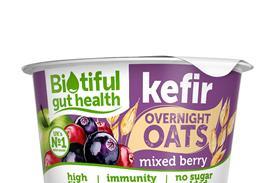


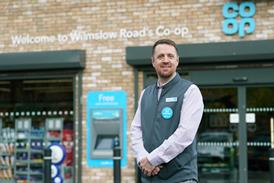






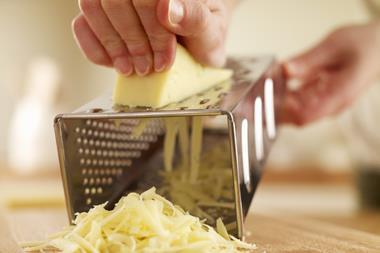

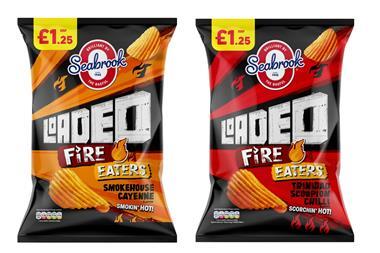
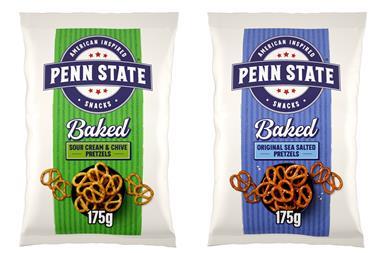

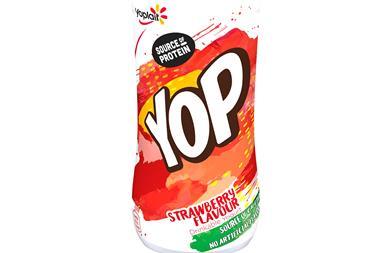






No comments yet